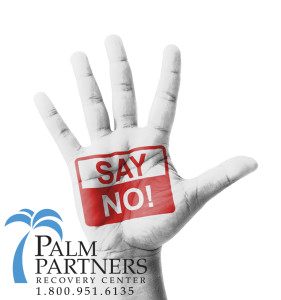As any individual in recovery can understand, there is a stigma on how will power should be the only necessity to overcoming addiction. Since the 1980’s part of the U.S. “War on Drugs” has been the all too familiar “Just Say No” battle-cry created by First Lady Nancy Reagan, which was later expanded to the opposition of violence and premarital sex to combat the concept of peer pressure. Although admirable and noticeably affective in its time, this simplistic slogan has been proven over the recent years as easier said than done. This may explain why the implementation of treatment through Holistic Therapy and Harm Reduction is becoming more effective than ever, and more relevant to those struggling with substance abuse and addiction.
In relation to the issue of recreational drug use, harm reduction is put forward as a useful perspective alongside the more conventional approach of the “War on Drugs”. Many of its advocates argue that prohibitionist laws punish the user for suffering from a recognized disease and cause even more harm; for example, forcing those who struggle with substance abuse to seek out drugs through unknown and often criminal sources at high prices and unspecified potencies, the risk factor of possible overdose and even death are greatly increased. These sick people are put in a position where they would rather stay silent than voice the need to seek help, because they are labeled as criminals themselves, and often do not seek treatment when told that to “Just Say No” should be sufficient for saving themselves. Here are 3 reasons Harm Reduction works better than “Just Say No”.
#1 Does Not Punish a Sick Person
The threat of jail time, fines and a criminal record frequently drives drug users to the extreme edges of society, which almost always leads to high-risk behaviors trying to get access to the drugs they may use. This invariably adds to the statistics of overdose, infectious diseases, and violence. While the Decriminalization of drug use is a method of Harm Reduction that treats drug abuse for what it is, a public health issue rather than a criminal activity. This enables those who suffer from substance abuse to feel safe to seek help without fear of prosecution while they find ways to taper off of the drug of choice and the harmful activities associated with getting and using drugs.
#2 Combats the Spread of Infectious Disease
In some areas the creation of Safe Injection Sites (SIS), or Drug Consumption Rooms (DCR) has helped contain the spread of diseases such as HIV. These are legally sanctioned, medically supervised facilities specifically designed to assist with community issues related to drug use, and provide a hygienic and stress-free environment for drug consumers. Users are provided with sterile injection equipment, information about drugs and basic health care, treatment referrals, and access to a trained medical staff. Some of these actually have counseling, hygienic and other services available to the impoverished individuals who visit the centers. Most prohibit the sale or purchase of illegal drugs, while many such facilities require forms of identification. Some restrict access to only local residents and apply other admission regulations to use the facilities and the services.
The EMCDDA (European Monitoring Centre for Drugs and Drug Addiction) did a review and noted that research into the effects of the facilities “faces methodological challenges in taking account of the effects of broader local policy or ecological changes” however they still concluded “that the facilities reach their target population and provide immediate improvements through better hygiene and safety conditions for injectors.” This review goes on to claim that the use of such facilities “does not increase levels of drug use or risky patterns of consumption, nor does it result in higher rates of local drug acquisition crime.” Showing that while these programs do create better environments for users, they also do not promote the illegal activity often associated with drug use.
#3 Treats More than the Drug Problem
Many who suffer with addiction know that substance abuse is not the only issue they have had to face, and assisting with variations of mental health is another focus of most Harm Reduction programs. Another attribute of Harm Reduction is that it works with people who are at risk of Self Harm (cutting, burning, etc.) Such programs aim at the education of those who are afflicted to teach new methods of coping with stress, regardless if related to addiction or not, and the provision of medical services for wounds and other negative consequences of self-inflicted injuries . The hope is that the harmful behavior will be moderated or removed and the people involved can be kept safe as they learn new methods of coping with life, addiction, or their surroundings.
The concept of Harm Reduction Therapy takes the sting out of and individual’s admission of substance abuse, and gives them safer conditions to use while seeking alternatives. It may not be fixing the problem, but many believe it is a more practical approach than telling someone dependent on a substance to “Just Say No”. Harm Reduction is also more conducive to maintaining a cleaner and safer community. Reducing crime by taking away some of the criminality, treating those violent to themselves or others, and by actively making an effort to clean up the community and keep the hazardous materials included in some drug use off the streets and out of sight.
If you or someone you love is struggling with substance abuse or addiction, please call toll free 1-800-951-6135.
